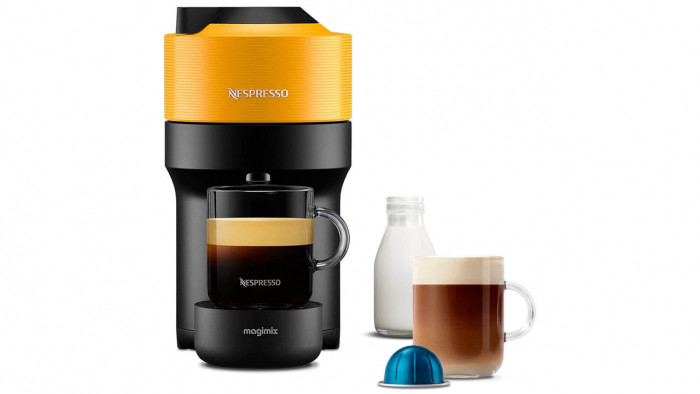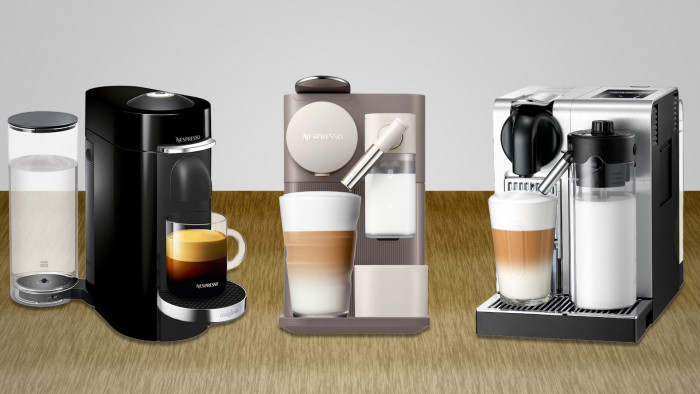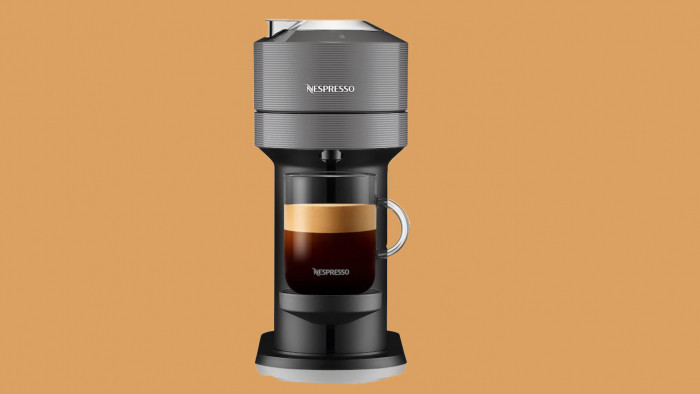Best juicers: top juicers for fruit and vegetables
These best juicers make turning food into drink easy.

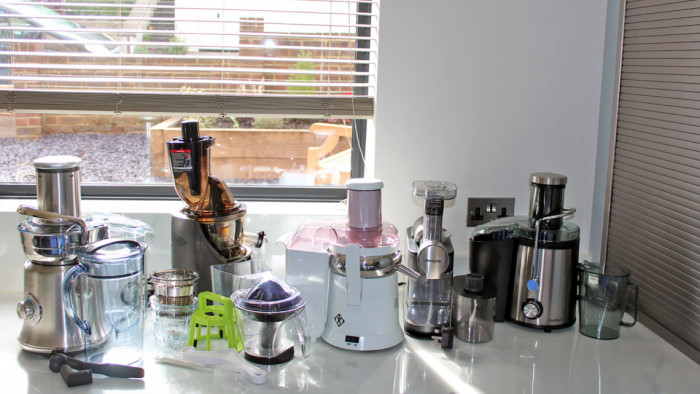
It's the New Year, so what better time to invest in a juicer and kick off that health, er, kick? Supermarkets are filled with pre-packed juices, but we all know fresh is best. Invest in one of the best juicers and not only can you guarantee the tastiest juice around, you can get creative with your combinations. Blueberry, pineapple and kale? Done.
If you’ve never bought a juicer before, it can be tricky to know which type is right for you. There are fast and slow designs, plus ones that look great but require more cleaning than others. It's also worth bearing in mind that there are juicers and then there are food processors and smoothie makers – all do a slightly different thing with a slightly different result.
Fortunately, we’ve put 10 of the best juicers through their paces, spending weeks peeling, chopping and blitzing fruit and veg.
You can read our in-depth reviews below and how we came to our best juicer conclusion. But, after much testing, the L'Equip 215 XL juicer is our best value pick and Philips Avance Collection MicroMasticating juicer our favourite overall. Kuvings EVO820 Evolution Cold Press Juicer came a close second – the only reason we haven’t chosen it as our top pick is its £500 price.
- These are the best blenders around right now
- The best hand mixer revealed
- Want the best food processor? Then this guide is for you

In terms of delivering bang for buck, the L'Equip 215 XL Juicer is our best choice – it balances consistently efficient juicing with a price tag of just over £100. It is a great buy for juicers newbies and enthusiasts alike. Plus it’s a cinch to put together and take apart.

The best juicer tested was the Philips HR1947/31 Avance Collection MicroMasticating, chosen because of its minimal pulp waste, compact worktop footprint, effortless assembly and ability to tackle a range of fruit and vegetables. It’s still something of an investment but if you want a juicer that continually delivers, and won’t end up gathering dust, it’s worth it.
The shortlist: Best juicers reviewed

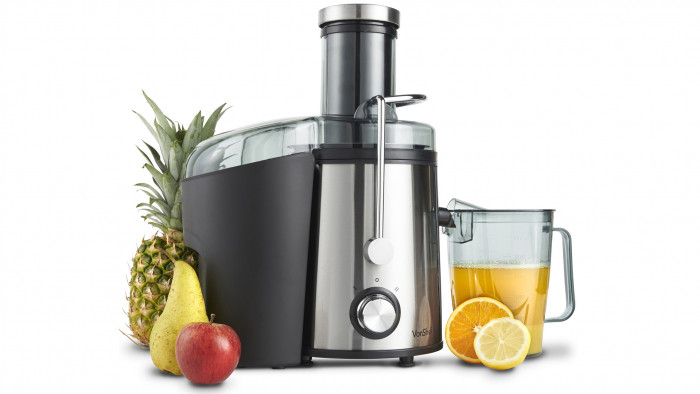
As the lowest priced juicer in our round-up, we weren’t sure what to expect from this pocket-friendly number. But it was a pleasant surprise. It works almost as well as juicers that cost twice as much.

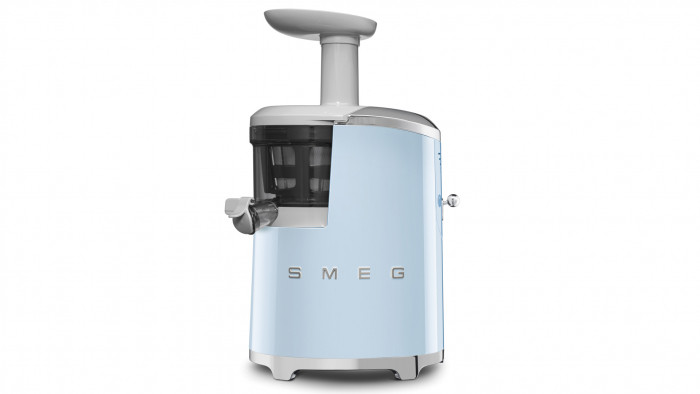
However useful an appliance is, if it lives out on your worktop, why not have something attractive to look at too? That’s the reasoning behind Smeg’s slow juicer, which combines style with a durable juicing machine.

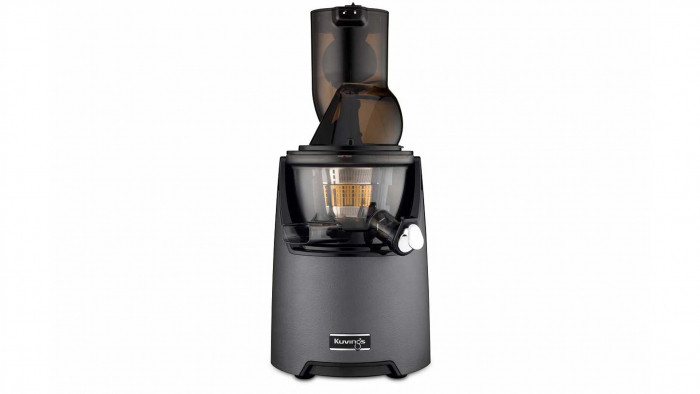
An incredibly well-designed slow juicer that frankly could probably squeeze juice out of anything. But there’s no getting around the fact that this is an investment machine.

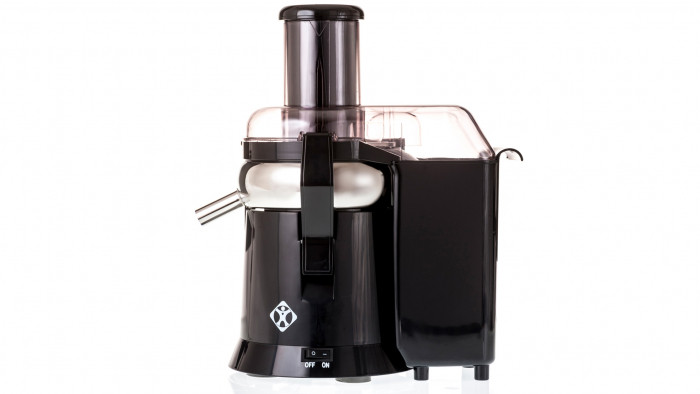
The 215 XL may not have the most exciting name. It may only have one speed. And it may not be the sleekest, but it is a hard-working juicer that is quick and easy to use, clean and assemble. t fits the bill perfectly.

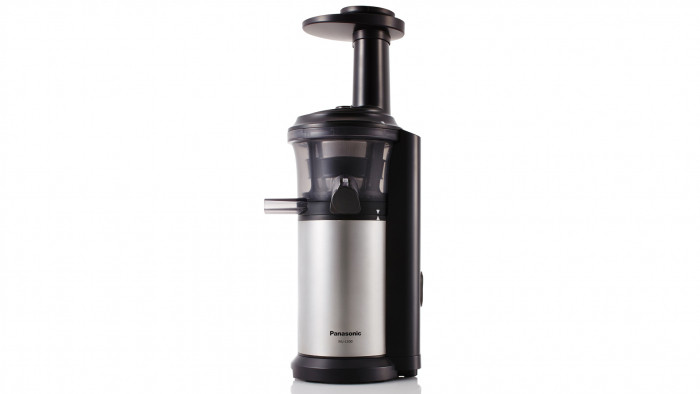
Panasonic MJ-L500 Slow Juicer is powerful. It can handleeverything from juice to icy desserts. It will even crunch its way through frozen fruit, turning berries and chunks of fruit into ‘oh I just whipped this up’ sorbet

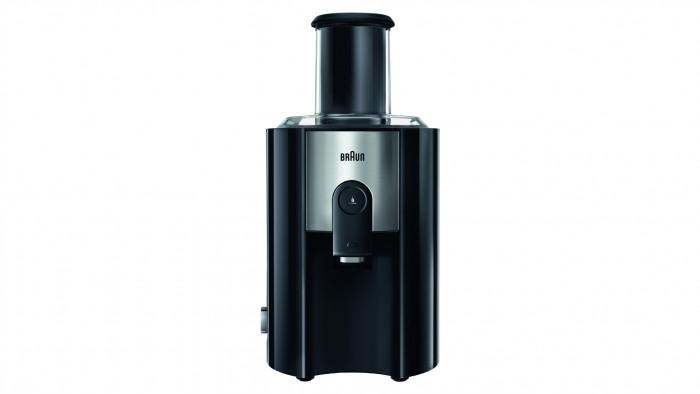
A good basic juicer that’s noisy but fast, its notable features include an anti-splash spout that doesn't spurt or drip, quick powering up and down, and two speeds for hard and soft fruit.

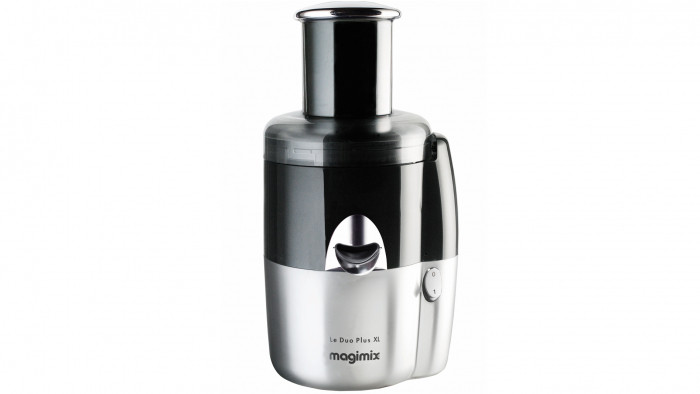
A simple design, quiet motor (though it’s still noisy when juicing) and entirely dishwasher-safe parts made us score this juicer highly. However, while it produced a good yield from apples and carrots, getting sufficient juice from leafy veg proved tricky.

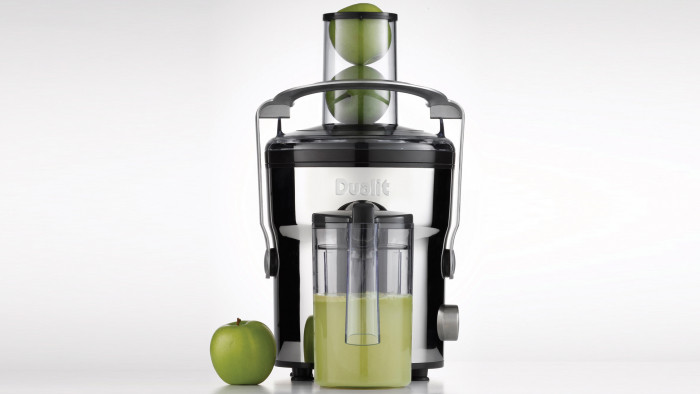
Proving a solidly built machine doesn’t need to blow the budget, the Dual-Max is probably one of the best models for someone starting a juicing habit but who isn’t ready to lay out hundreds just to dip a toe in the water.

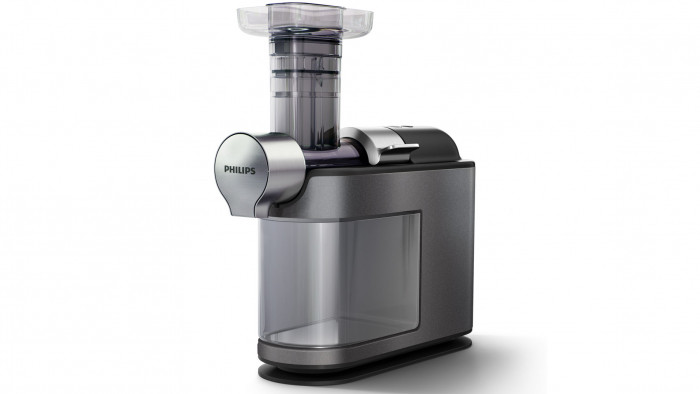
The petite statur of this juicer won us over. It’s compact enough to store at the back of a worktop underneath a wall cabinet and its juice jug and extra filter can be stored inside the waste pulp bin when you’re done.
The expert's view
There are three important questions to ask when thinking about buying a juicer. Do you want a "fast" or "slow" extraction model? How much space do you have to spare? And are you willing to pay a bit more for convenience and easier cleaning?
Even low-cost juicers can do the job well, if you choose carefully. It's one of the benefits of a genre of kitchen gadget that is now fairly mature, rather than part of a trendy fad.
Best juicers: how we selected
Every brand under the sun used to make a juicer. That variety has narrowed with the rise of smoothie makers and pro-style blenders. The market now mostly consists of models that tend to be more than £100, but produce a high yield with less maintenance, and affordable ‘fast’ juicers with few bells and whistles.
Slow juicers (also known as cold press juicers, or masticating as they ‘chew’ the ingredients to extract more juice) have risen in popularity. Fast, or centrifugal, juicers (where ingredients are shredded, spun and strained) often have to emphasise their time-saving qualities, such as rapid juicing and reduced food prep.
For these tests, we’ve tried to select a varied mixture of fast and slow juicers, at a range of prices. Our cheapest is a budget-friendly sub-£50 VonShefcentrifugal model. There are 10 different manufacturers, ranging from specialist juicer makers that you may not be familiar with, such as Kuvings and L'Equip, to companies that mainly make small kitchen appliances, such as Dualit and Magimix. There are also companies that offer a range of other products, such as Philips and Panasonic.
Juicing at home is the best way to maximise your drink’s vitamins and nutrients but no amount of tasty fresh OJ will lure you into making it if a machine is messy or difficult to use, assemble and clean. We prioritised designs that are easy to take apart and put back together (you’ll still find older juicer models available that are like 3D jigsaw puzzles), can be cleaned in a couple of minutes or are dishwasher-safe and come with useful features, such as non-drip stoppers and different settings for different produce.

We also chose models that would minimise food prep time with wider feed chutes (so you can juice a whole apple without chopping for example) or a large pulp bin (for reduced emptying during weekend juicing sessions), and those that have more than one speed, so can adapt to soft and hard textures.
Accessories were also a plus point. We looked for brushes to help with clean-up afterwards, recipe books (to inspire you to get the most out of your juicer), lidded juice jugs (so you don’t have to juice every day and can store a few days’ worth in the fridge) and different strainers (for making thicker juice, coulis or even frozen fruity desserts).
At the more expensive end of the market, performance tends to be fairly consistent. If you have a couple of hundred pounds to spend, the chances of buying a poor-performing juicer are low. At this price, the buying decision will be mostly about features, design and aesthetic. If you keep these machines clean and well-maintained, they should last for years without any major hiccups.
However, for less than £100, quality varieties more and you’re limited to centrifugal designs, Many include more plastic parts than metal, which may be less durable over time and can stain. They’re fine for occasional juicing, or as a first juicer, but may not be suitable for everyday heavy use. Budget colour choices tends to be black, white or silver. Designs are more functional than stylish, and features reduced to a minimum.
Best juicers: how we tested
Assembling a juicer shouldn’t be a special skill so the first thing we were looking for were machines that were quick to slot together, and ideally had lock symbols or arrows on applicable parts. A quick-start guide or separate diagram showing how to assemble the juicer, which you can keep handy until you’re up to speed, was also a plus.
Another feature on our wishlist was clear, concise instructions, as too often manuals can be overwhelmingly wordy. Or, conversely, too brief to get a real sense of what the machine can do.
Each juicer we tested was given four foods to assess its capabilities. These were a hard vegetable (carrot), soft vegetable (spinach leaves), hard fruit (apples) and soft fruit (peeled orange segments). Speeds were adjusted for each where available, and food introduced whole where possible. We then looked at how much juice was produced from each food, how much waste pulp ended up in the bin (including if it contained any unjuiced lumps of the food), and how damp the waste pulp was.

After juicing each food, we also looked inside the machine to see how much waste pulp or food remained in the bin, whether any lumps or clogs were present and if filters looked congested or fairly clear (and so if they would require cleaning in-between different foods or if we could carry on using the machine without any clogs forming).
Following each juicing session, we also marked each juicer on how much mess there was around the machine, from either splashes and spurting while in operation or drips on the worktop in lieu of a resealable spout. More mess equals more clean-up time, so even if a juicer is relatively low maintenance to use, constantly cleaning up around it can be a deterrent to a regular juicing routine.
Finally, we evaluated how easy each model was to take apart and clean after use. A good juicer design shouldn’t have any nooks or crannies that can’t be reached with a cloth or brush when cleaning by hand (and so could become sticky or unhygienic over time), and any seals should be easy to unplug and re-seal.
The best models tend to come with a brush or cleaning tool in the box specifically suited to removing clogs or fibres from that machine, so we awarded extra points to those that made washing by hand as fuss-free as possible.
Entirely dishwasher-safe parts were also a plus. A few of the models we tested still had one or two parts that had to be cleaned by hand and remembering which ones these are when a juicer’s in regular use would be tricky. It’s worth noting that most machines still advise a quick scrub of filters before placing in the dishwasher and that most go on the top rack for reduced wear and tear from the water jets.
Best Juicer Reviews: The test results
The Philips AvanceCollection MicroMasticating juicer scored highly in almost all areas so we’ve chosen it as our best juicer. Ease of cleaning is the clearest positive – its parts only needed a quick rinse to flush out fibres and were all dishwasher-safe.
We also found it very easy to assemble – the parts that come into contact with food all slot together into one unit, which then locks into place on top of the machine. Another slow juicer, the Kuvings EVO820, produced a slightly better yield but, in comparison, took far longer to assemble and disassemble and clean, and took up more room on the worktop.
We tested two other slow juicers. One was the Panasonic MJ-L500, which performed well, except with spinach leaves. It was straightforward to put together but some of its parts weren’t dishwasher safe. We also liked its ability to make frozen desserts.

The other was Smeg’s slow juicer– an efficient machine with a high juice yield that was easy to assemble. It performed especially well with citrus fruit and made short work of leafy greens but as the highest priced model in our selection, this slightly better performance might not be worth the extra expense.
On the fast juicer front, we tested six models – theL’Equip 215 XL, which didn’t look much different than many from the outside but performed exceptionally well, making it our best value choice. We liked everything about it, from the good advice about how best to maintain it and clean it by hand, to the fact that it was also dishwasher safe should you not have time to scrub.
The L’Equip 215 XL faltered a little with spinach leaves and would have benefited from having a cleaning brush in the box, but for the price we felt it delivered on most key points.

Also ranking highly was the Sage Nutri Juicer Cold XL – similar in design but with more control over speeds and an incredibly useful storage jug. More of its parts are constructed from metal, too, ensuring a long lifespan but also increasing its weight – not ideal if you have to move it around the kitchen or in and out of a cupboard.
Our cheapest model in the selection had a similar design – the VonShef 800W juicer. While its build quality meant we had a small leak while testing, it nonetheless made short work of everything but the spinach, which produced a negligible amount of juice.
Our final two were the Dualit Dual Max Juicer and the Magimix Le Duo Plus XL – both relatively compact and elegant centrifugal machines, but both prone to drips from their spouts once the glass or jug had been taken away.
The Dualit model tended to gather pulp in the lid, rather transferring it to the pulp container, while neither performed as well with spinach as they did hard fruit. These were both good, hard-working machines but definitely more suitable for citrus and hard fruit than leafy veg.
Best Juicer overall:
Philips Avance Collection MicroMasticating juicer review, £199.99, Amazon (RRP £295)
Kitchens rarely have space for a one-trick small appliance, so the sheer size of this juicer won us over. It’s compact enough to store at the back of a worktop underneath a wall cabinet and its juice jug and extra filter can be stored inside the waste pulp bin when you’re done. There’s even cord storage around the base of the machine for the generous one-metre cable.
Inside, a long thin auger screw (rather than the chunky ones you’ll find on larger upright slow juicers) crushes fruit, vegetables and nuts in three stages before the juice makes its way to your glass. It then ejects the pulp into a container below. In our tests, it performed brilliantly with every food, processing spinach as easily as citrus and producing minimal, only slightly damp, pulp.

While juicing it was quiet, meaning it’s also a good choice if you’re the first person up in the morning, work unsocial hours or don’t want to disturb a child’s nap time. The juice it produced was consistently great quality, with intense flavours, a good consistency (which can also be thicker with more pulp by switching to the fibre juice filter) and barely any foam. An included recipe book had some ideas for blends to try, although not a huge amount of guidance.
It was prone to was juice surges if food was pushed through too quickly, or if chunks became stuck, and had to be nudged through with the pusher. The feed chute isn’t that wide, so more prep was required than with other machines, and if you were juicing in a hurry, this might prove frustrating. However, the lidded jug does at least mean you can juice ahead of time if this becomes an issue.
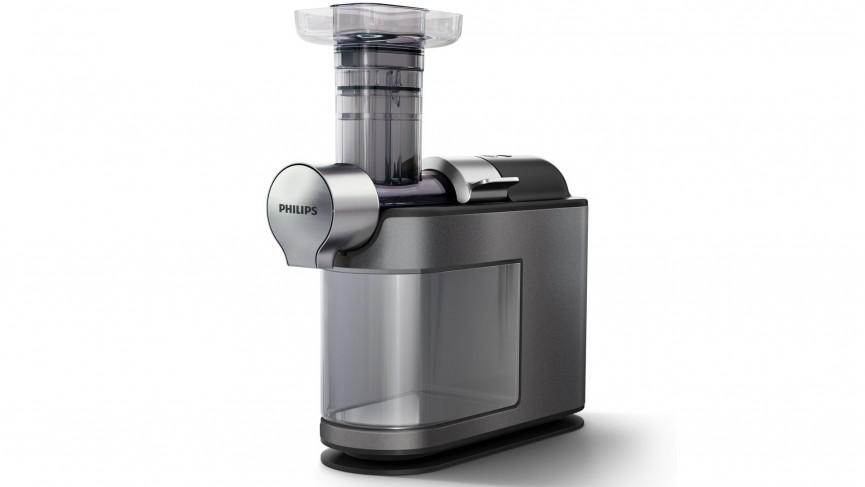
Another reason we’ve chosen it as our favourite was that it was incredibly simple to assemble and comes with a separate diagram you can keep to hand until it’s second nature. Taking it apart was mess-free – the non-drip spout clicks to stop splashes of juice on the worktop, plus its pre-clean function leaves the interior fibre-free. It took less than a minute to rinse all the parts, none of which had sharp edges, and they were all dishwasher-safe as well.
Of all the juicers we tested, we felt the Avance Collection MicroMasticating model had the best balance of convenience, easy storage, efficiency and minimal maintenance.
Best juicer for value
L'Equip 215 XL Juicer review, £169.95, Amazon
The L'Equip 215 XL might not have the most exciting name, only has one speed, and it is not the sleekest model in our round-up. But in terms of being a hard-working juicer that’s quick and easy to use, clean and assemble, it fits the bill perfectly.
Some of the reasons we chose it as our best value buy include its large pulp container and wide feed chute. You can juice for as long as you like without stopping to empty it – great for large batches — and it can take small whole apples and carrots (although larger apples can be obstructed by the fin halfway down the chute).
There are some bundled recipes to try, but no juice jug.

We liked that theL'Equip 215 XL's spout didn’t spurt as we juiced, even though its powerful motor processes fruit and veg in a matter of seconds, and that after we were finished, there were no clogs inside the machine – all the pulp made it into the container, with some sticking to the lid.
Juicing the apples produced a clear drink with a small amount of froth and moist, but not soaking, well-processed pulp. We had similar results from carrots, with each one creating about a quarter of a glass of juice with substantial, but quite dry, pulp.
Oranges gave a good yield of about a third of a glass of juice per fruit, with slight froth and damp pulp. We found that trying to ease food through the L'Equip 215 XLslowly translated to the best results, although it was hard to do this with soft citrus. Where it didn’t perform as well as hoped was with the spinach leaves. Even when rolled or juiced with apple, they only produced a small amount of juice. The spinach pulp was minimal but this machine still didn’t feel like the best choice for leafy veg.

Taking the L'Equip 215 XL apart and cleaning up was straightforward. While there’s no brush included for cleaning the mesh filter basket, fibres can be removed quite easily and all the parts are dishwasher-safe. A non-drip spout would improve this juicer, as we disliked having to wipe up splashes as we took it apart.
In terms of size, while the L'Equip 215 XL is not the smallest we reviewed, it’s still more compact than models of a similar design. It can be stored easily. Many of the internal parts are made from stainless steel too, which should result in a longer lifespan.
Overall, the L'Equip 215 XL is good value considering its mostly efficient performance, and an excellent buy if most of what you plan to juice is hard fruit or veg.
Comparing the rest
Best for serious juicing fans
Kuvings EVO820 Evolution Cold Press Juicer, £479.00, Amazon
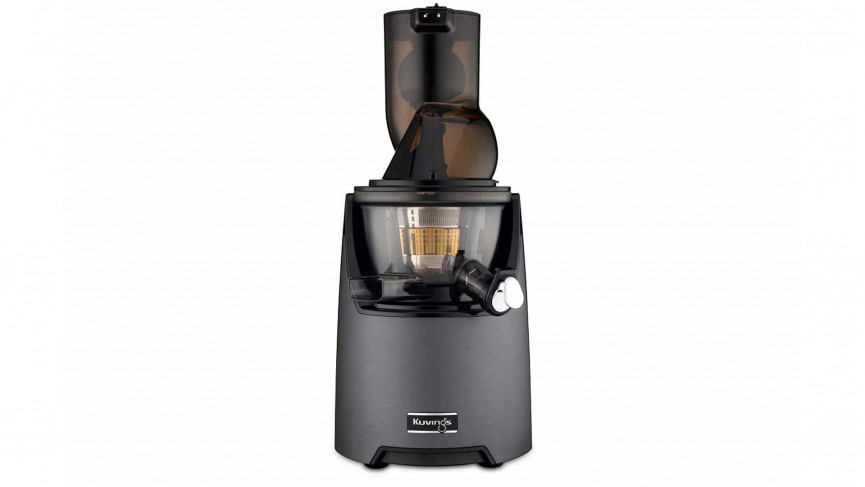
An incredibly well-designed slow juicer that frankly, could probably squeeze juice out of anything, but there’s no getting around that this is an investment machine. However, it offers more than most: high juice yield and a minimal amount of pulp, a clever feed chute that comes with a flip-gate rather than a fin, which makes juicing whole apples easier, drip-stop spout and wrap-around cleaning brush for effortless maintenance. There’s also an optional citrus attachment, which adds another £30 to the price, but turns it into an efficient reamer.
Best for batch juicing
Sage the Nutri Juicer Cold XL, £299.00, Amazon
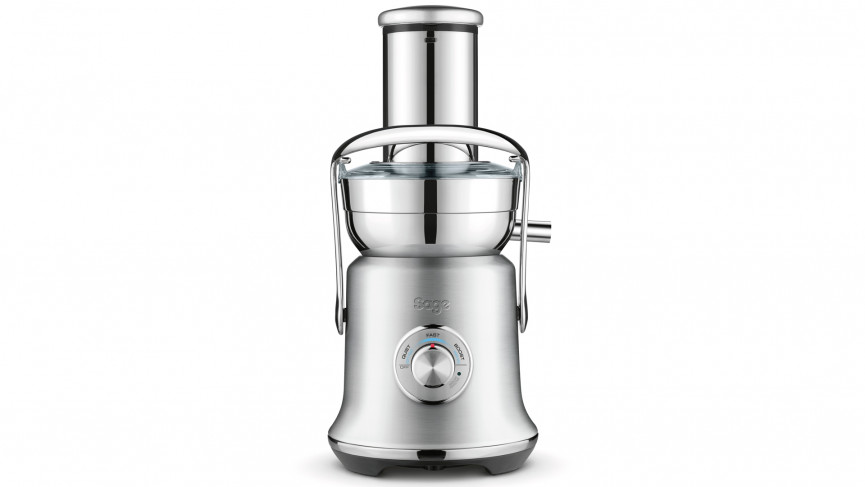
Slow juicers might not be the snail-like appliances the name suggests but for those who don’t want to wait around for a cold press, there’s the Sage the Nutri Juicer Cold XL. It's a weighty no-nonsense machine that aims to combine the speed of a centrifugal juicer with the quality of a slow one. In some respects it delivers, producing minimal dry pulp for hard fruit and veg. We would have liked to see more from the softer stuff, considering it has a dedicated speed for it but loved the design otherwise. A large pulp bin and lidded jug with a seal means you can make days’ worth of juice in one go, plus a flexible nozzle gives the option of juicing into a glass.
Best for retro style
Smeg Slow Juicer, £359.99, Amazon

However useful an appliance is, if it lives out on your worktop, why not have something attractive to look at too? That’s the reasoning behind Smeg’s slow juicer, which combines style with a durable juicing machine. Two filters mean you can have drinks with more pulp should you wish to, while a drip-stop spout prevents all that lovely juice dribbling over your surfaces. Plus, unlike many juicers that only come in monochrome, there’s a choice of pastel blue, red or cream instead of the standard black.
Best for versatility
Magimix Le Duo Plus XL Juice Extractor, £179.99, Amazon

Considering its motor comes with a 30-year guarantee, you can be sure the Le Duo Plus XL was just itching to be put through its paces. We especially liked it for its two-cone citrus press, which worked as well for oranges as it did limes (a fruit that can be stubborn to produce juice), the SmoothieMix attachment that makes everything from coulis to baby food and the spatula. It lets you scoop out pulp easily when you are finished juicing. A simple design, quiet motor (though it’s still noisy when juicing) and entirely dishwasher-safe parts also made us score it highly. However, while it produced a good yield from apples and carrots, getting sufficient juice from leafy veg proved tricky.
Best as a first juicer
Dualit Dual-Max Juicer, £59.99, Amazon
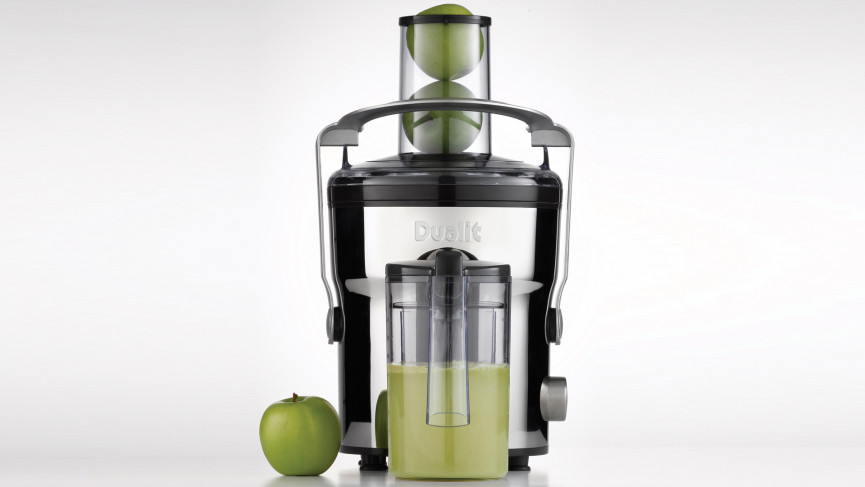
Proving a solidly built machine doesn’t need to blow the budget, the Dual-Max is probably one of the best models for someone starting a juicing habit but who isn’t ready to lay out hundreds just to dip a toe in the water. It has two speeds for getting the most from soft and hard fruit and was very fast – so much so, that our juice was always foamy. Fortunately, its juice jug’s separator served to skim most of it off when we poured it out. It was messy to clean up after disassembling it, as pulp gathered in the lid, and you’ll need to buy a separate brush to clear clogs from the metal filter before chucking in the dishwasher. But other than that, there’s a lot to like.
Best for a budget
Vonshef 800W Stainless Steel Juicer, £49.99, Amazon

As the lowest priced juicer in our round-up, we weren’t sure what to expect from this pocket-friendly number. But it was a pleasant surprise. It works almost as well as juicers that cost twice as much, and although there was a tiny leak from the side of the lid (despite it being firmly clamped in place), and a bit more mess during disassembly, these felt like niggles given the price. The build quality is less robust than others we tested but considering you can spend the saving on lots of fruit and veg for juicing, it’s hard to find much fault with it.
Best for frozen desserts
Panasonic MJ-L500 Slow Juicer, £399,00, Amazon

With a fair few parts, it’s a little bit of a puzzle to put this juicer together but persist with the MJ-L500 and your reward can be everything from juice to icy desserts. It will even crunch its way through frozen fruit, turning berries and chunks of fruit into ‘oh I just whipped this up’ sorbet – great for dieters craving a sweet fix as well as healthy puddings for kids. It performed especially well with apples, turning them into slightly foamy yet crisp juice with compacted pulp that was almost dry to the touch, but leafy greens didn’t produce much yield. However, for under £200, there’s a lot of functionality.
Best for families
Braun IdentityCollection Spin Juicer J500, £129.00, Amazon
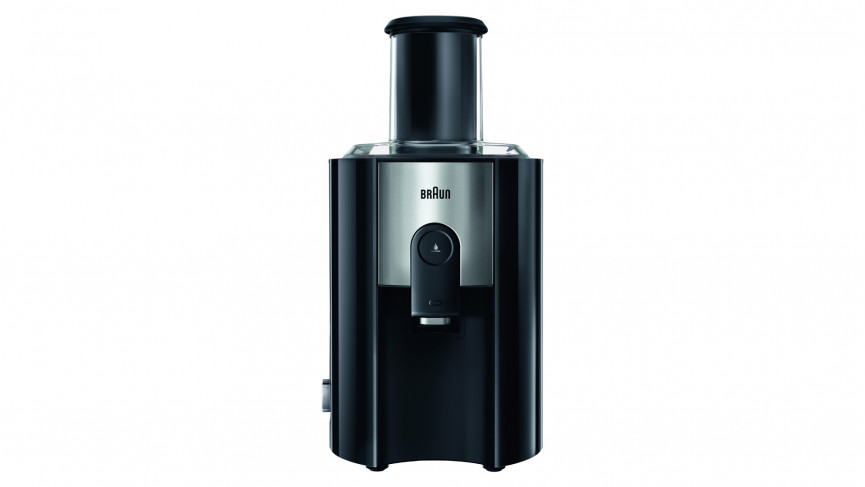
A good basic juicer that’s noisy but fast, its notable features include an anti-splash spout that doesn't spurt or drip, quick powering up and down, and two speeds for hard and soft fruit. We were able to fit apples into its wide feed chute too, only deferring to the pusher to ease the last few pieces of fruit through. There was quite a lot of foam on top of the juice but a separator in the jug helped to sieve this out. The remaining pulp was fairly dry. Oranges produced a good amount of juice, but wetter pulp. Smaller pieces of food were trickier to juice, and had a habit of spinning away from the filter.
One to avoid?
All juicers have their failings. There isn’t yet a design that does away with food prep altogether, produces a large yield and needs little maintenance. So rather than pinpoint a model to avoid, we’d suggest making sure you buy the juicer that’s right for how you plan to juice and your everyday lifestyle to avoid falling out of love with it.
If you like speedy OJ and apple juice, choose a centrifugal model, or if veggies, soft fruit and nuts is more your thing, go for a slow juicer. And if you think it’ll end up getting relegated to a cupboard, never to see the light of day again, buy one that’s compact enough to have out on the worktop so you’re more likely to use it.
While none of the juicers we tested were especially difficult to clean, some were definitely more straightforward than others, so if you find yourself often short on time, pick one that’s dishwasher-safe or has as few parts as possible.
Latest
Related Reviews and Shortlists


The best whisky taste tested




